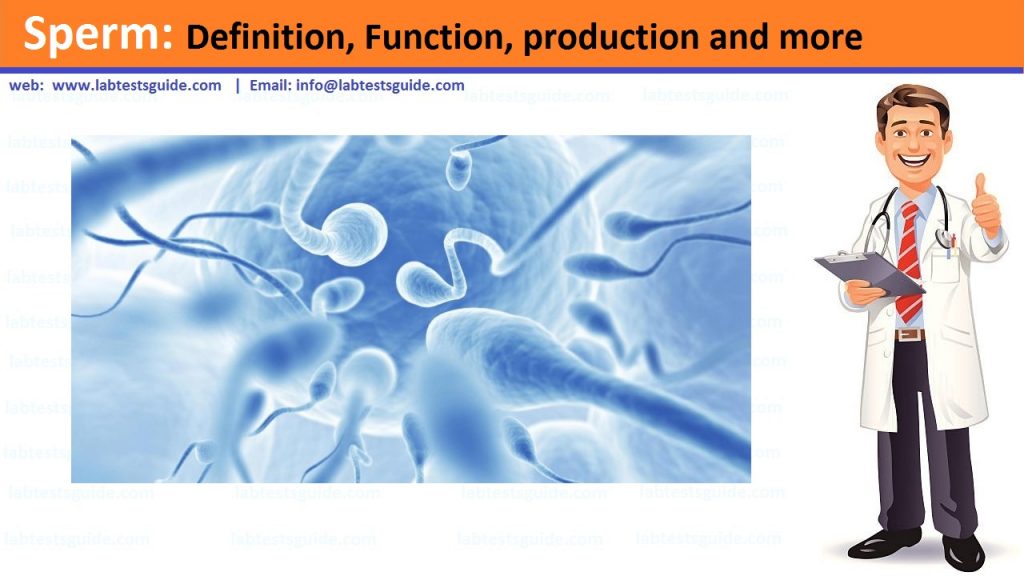
A man’s reproductive system is specifically designed to produce, store, and transport sperm. Unlike the female genitalia, the male reproductive organs are on both the interior and the exterior of the pelvic cavity. They include:
- the testes (testicles)
- the duct system: epididymis and vas deferens (sperm duct)
- the accessory glands: seminal vesicles and prostate gland
- the penis

Where is sperm produced?
Sperm production occurs in the testicles. Upon reaching puberty, a man will produce millions of sperm cells every day, each measuring about 0.002 inches (0.05 millimeters) long.
How is sperm produced?
There is a system of tiny tubes in the testicles. These tubes, called the seminiferous tubules, house the germ cells that hormones — including testosterone, the male sex hormone — cause to turn into sperm. The germ cells divide and change until they resemble tadpoles with a head and short tail.
How long does it take to produce new sperm?
The process of going from a germ cell to a mature sperm cell capable of egg fertilization takes around 2.5 months.
The takeaway
Sperm are produced in the testicles and develop to maturity while traveling from the seminiferous tubules through the epididymis into the vas deferens.
Related Articles:
RELATED POSTS
View all
